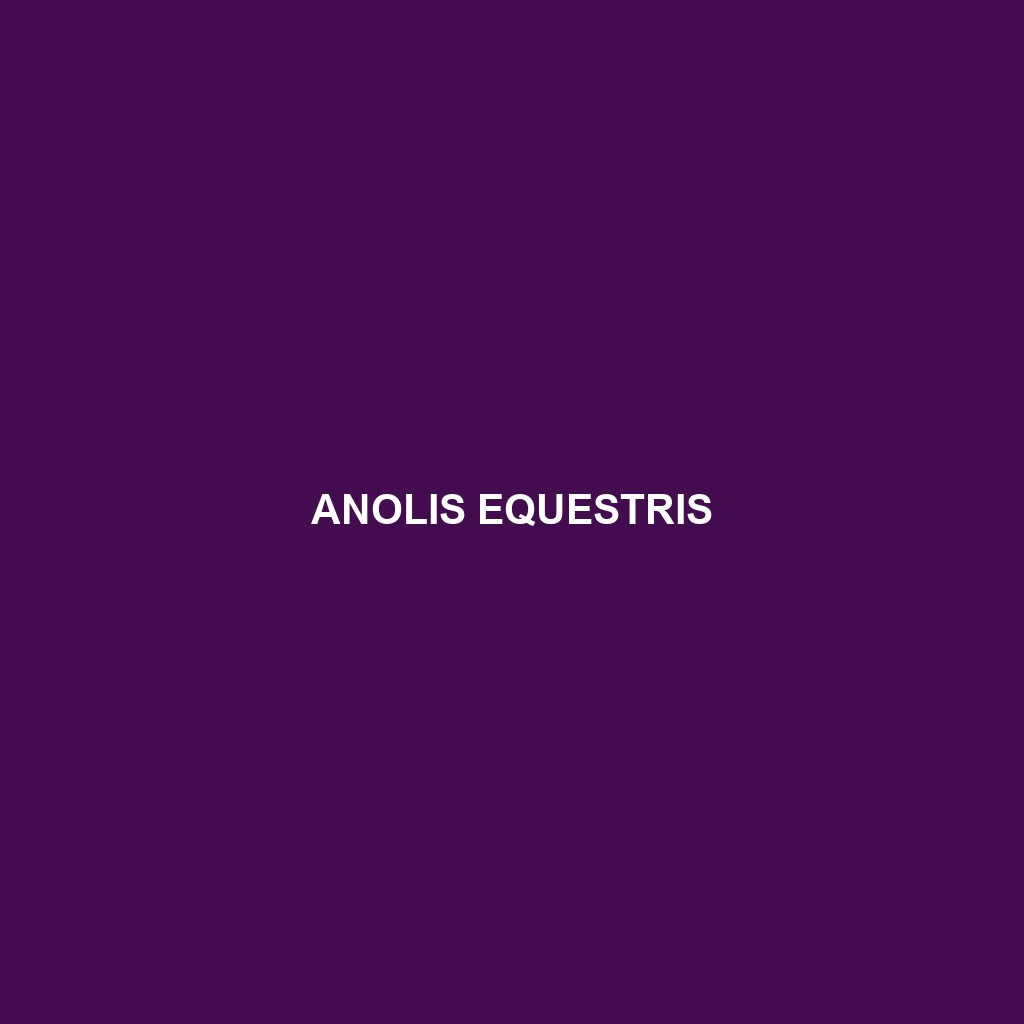Anolis equestris: The Cuban Green Anole
Common Name: Anolis equestris
Scientific Name: Anolis equestris
Habitat
Anolis equestris, commonly known as the Cuban Green Anole, is primarily found in the tropical and subtropical regions of Cuba, the Bahamas, and parts of the Caribbean. Preferring humid environments, these lizards inhabit a variety of landscapes such as rainforests, coastal areas, and gardens. They are often seen basking on tree trunks, branches, and foliage where they can easily blend into their surroundings.
Physical Characteristics
The Cuban Green Anole typically reaches a length of about 6 to 8 inches (15 to 20 cm), making it a medium-sized lizard. They are known for their vibrant green coloration, which can change to brown or gray depending on their mood or environmental conditions. Distinctive features include a long tail, an elongated snout, and a dewlap—a flap of skin beneath the throat—that is used during courtship or territorial displays. Their bright colors and unique adaptations make them a fascinating subject of study among herpetologists and wildlife enthusiasts alike.
Behavior
Anolis equestris exhibits diurnal behaviors, which means they are most active during the day. They are known for their territoriality, especially the males, which often display their bright dewlaps and perform push-up displays to assert dominance. These lizards are arboreal, spending much of their time on trees, and are adept climbers. Their agility allows them to escape predators and compete for resources within their habitat.
Diet
The diet of Anolis equestris primarily consists of a variety of insects, including crickets, flies, and beetles. They are also known to consume small invertebrates, making them important players in controlling pest populations. These lizards use their keen vision to hunt and may also exhibit ambush behaviors, waiting for unsuspecting prey to come within range.
Reproduction
Breeding for Anolis equestris typically occurs during the warm months of spring and summer. Females are known to lay clutches of 1 to 3 eggs in hidden locations such as leaf litter or loose soil. After a gestation period of 6 to 8 weeks, hatchlings emerge, measuring approximately 2 inches (5 cm) in length. The young lizards are independent from birth, quickly learning to hunt and find shelter from predators.
Conservation Status
As of now, Anolis equestris is classified as being of “Least Concern” by the IUCN Red List. However, ongoing habitat destruction and climate change pose threats to their populations. Conservation efforts are essential to maintain stable environments for this species, particularly in areas where their habitats overlap with human activities.
Interesting Facts
One interesting fact about Anolis equestris is its ability to change color, which is not only for camouflage but also for communication. The species has a unique courtship display involving the expansion of its dewlap to attract mates. Additionally, they are often kept as pets due to their manageable size and fascinating behaviors.
Role in Ecosystem
Anolis equestris plays a vital role in its ecosystem as both predator and prey. By feeding on insects, they help control pest populations, contributing to the health of their environment. In turn, they serve as a food source for larger predators, ensuring a balanced food web. Their presence reflects the overall biodiversity and health of their habitat, making them an important species for ecological studies.
